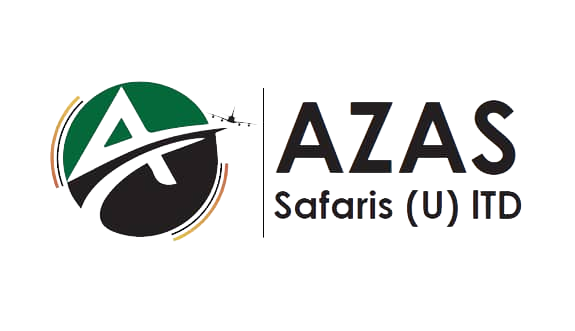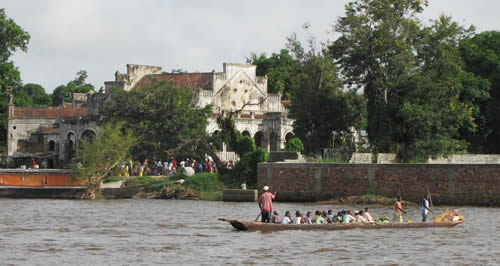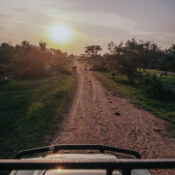Tourist Attractions In Congo
Tourist Attractions In Congo
Formerly known as the Zaire, the Democratic Republic of Congo is the second largest country in Africa. She borders South Sudan, The Central African Republic, Burundi, Uganda, Tanzania, Angola, Zambia and the Republic of Congo. The capital Kinshasa has the highest population of residents in Africa – About 14,950,000 residents. It is also the second largest French speaking city in Africa. The high population in Kinshasa is attributed to the insecurity in some parts of the country. Residents also find it easier to get employment opportunities and basic social services.
The Democratic Republic of Congo is a country with great natural resources and wonders. Apart from gold, diamonds and oil, the Congo has over 15 other mineral resources. I should point out at this point 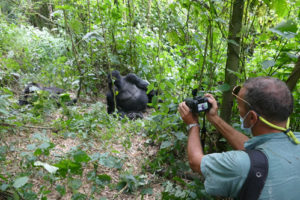 that the uranium ore used to build the first atomic bombs were got from the Shinkolobwe Mines in the country. Minerals aside, Congo is a paradise for wildlife and nature lovers. From Africa’s big 5 animals to birds and reptiles, the country has it all. The Congo is home to wildlife species found nowhere else on earth including the elusive okapi, bongo, bonobos (pygmy chimpanzees), Congolese Peafowl, eastern lowland gorillas and mores. It is only in the Congo where tourists can track both wild mountain gorillas and Grauer’s gorillas (Eastern Lowland gorillas). Other beautiful attractions include active volcanoes, waterfalls.
that the uranium ore used to build the first atomic bombs were got from the Shinkolobwe Mines in the country. Minerals aside, Congo is a paradise for wildlife and nature lovers. From Africa’s big 5 animals to birds and reptiles, the country has it all. The Congo is home to wildlife species found nowhere else on earth including the elusive okapi, bongo, bonobos (pygmy chimpanzees), Congolese Peafowl, eastern lowland gorillas and mores. It is only in the Congo where tourists can track both wild mountain gorillas and Grauer’s gorillas (Eastern Lowland gorillas). Other beautiful attractions include active volcanoes, waterfalls.
There are also incredible cultural experiences with tribes like the Mbuti Pygmies. These pygmies still live like they used to over 10,000 years ago. Stay with the Mbuti pygmies for a week and you will go back home with amazing stories to tell your friends. Cultural experiences aside, there are also amazing physical features like the Nyiragongo Volcano. The experience of observing the boiling Magma on top of 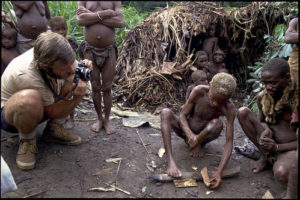 this mountain revivals any game drive you will do in the Masai Mara or the Serengeti National Park. But there is more. Congo is blessed with amazing waterfalls and endless rivers. Following the river Congo by boat for a month will give you an opportunity to appreciate the country’s natural beauty and tourism potential.
this mountain revivals any game drive you will do in the Masai Mara or the Serengeti National Park. But there is more. Congo is blessed with amazing waterfalls and endless rivers. Following the river Congo by boat for a month will give you an opportunity to appreciate the country’s natural beauty and tourism potential.
Whereas the Democratic Republic of Congo is blessed with incredible biodiversity and natural resources, tourism is still underdeveloped. The cities are modern but the road networks connecting them to the rural countryside are still poorly developed. Local flights are possible from city to city but at a cost. One of the reasons often pointed out for the poor tourism infrastructure in many parts of country is the 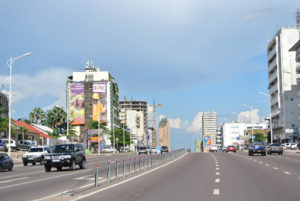 relative insecurity in many parts of the country especially Eastern Congo. This insecurity has kept away tourists from visiting some of the most beautiful national parks in Africa. The insecurity is caused by rebels and militia groups who have found safety in the remote jungles in the countryside after being driven away from urban centers by government forces. They survive in these remote areas and forests by trading in game meat, mineral excavations and pet trade.
relative insecurity in many parts of the country especially Eastern Congo. This insecurity has kept away tourists from visiting some of the most beautiful national parks in Africa. The insecurity is caused by rebels and militia groups who have found safety in the remote jungles in the countryside after being driven away from urban centers by government forces. They survive in these remote areas and forests by trading in game meat, mineral excavations and pet trade.
There is great hope for the country and things are improving. Increased globalization means the Congo cannot be left behind. Soon the rebels and militias will be no more and when that happens, people will 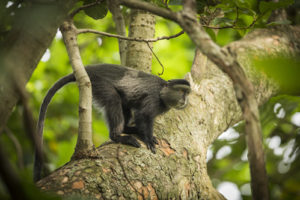 begin realizing what they have been missing. There are many who predict that The Democratic Republic of Congo will become one of the most visited countries in Africa in the near future. This article will focus on the main tourist attractions in the Congo. We have a separate article on the things to do in Kinshasa. If you are visiting the eastern part of the country, you might find an article about the top attractions in Goma interesting. You might also want to read about the national parks in the Democratic Republic of Congo.
begin realizing what they have been missing. There are many who predict that The Democratic Republic of Congo will become one of the most visited countries in Africa in the near future. This article will focus on the main tourist attractions in the Congo. We have a separate article on the things to do in Kinshasa. If you are visiting the eastern part of the country, you might find an article about the top attractions in Goma interesting. You might also want to read about the national parks in the Democratic Republic of Congo.
Things to do in Congo – Best Places to Visit in the Democratic Republic of Congo
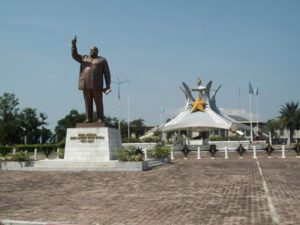 Museums and Historical buildings in Kinshasa: As the center of power and economic activity, Kinshasa is home to many prominent buildings worth visiting. They include the National Museum of Kinshasa, Palais de la Nation, the parliament building the Chapel of the American Baptist Missionary Society and the Roman Catholic Cathedral. A tour of the city can be arranged with the help of a local tour operator or an experienced private Guide. The best place to get a genuine Guide is at your hotel or by arranging for one through your host or contact in the country.
Museums and Historical buildings in Kinshasa: As the center of power and economic activity, Kinshasa is home to many prominent buildings worth visiting. They include the National Museum of Kinshasa, Palais de la Nation, the parliament building the Chapel of the American Baptist Missionary Society and the Roman Catholic Cathedral. A tour of the city can be arranged with the help of a local tour operator or an experienced private Guide. The best place to get a genuine Guide is at your hotel or by arranging for one through your host or contact in the country.
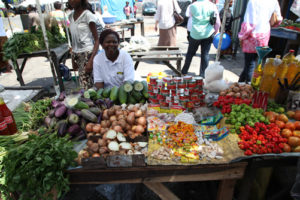 Marché Central: This market it found in Matongé and is the main one in Kinshasa. Visiting the market provides numerous opportunities to observe the local people doing business and going about with their daily lives. You can also choose to buy fresh tropical fruits, vegetables, grains, herbs, second hand clothes or brand new Congolese fabrics. Most of the stalls in the central market are open and only covered by umbrellas except for the larger ones. By the time you leave the market, you would have mingled with the real people of time and learnt something about their way of life.
Marché Central: This market it found in Matongé and is the main one in Kinshasa. Visiting the market provides numerous opportunities to observe the local people doing business and going about with their daily lives. You can also choose to buy fresh tropical fruits, vegetables, grains, herbs, second hand clothes or brand new Congolese fabrics. Most of the stalls in the central market are open and only covered by umbrellas except for the larger ones. By the time you leave the market, you would have mingled with the real people of time and learnt something about their way of life.
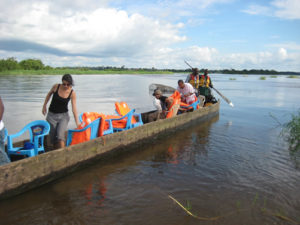 The Congo River: After the Amazon, the Congo river is the second most extensive river system in the world. It is the deepest river in the world with an overall volume that is second only to the amazon. Water from the river helps contribute to the remarkable scenery and biodiversity in much of the countryside. The river is home to over 713 species of fish, crocodiles, hippos, birds and waterfalls. Talking about waterfalls, the Congo river is capable of supplying all the hydro-electric power needed in Africa. Over 40 power plants have been built along the river.
The Congo River: After the Amazon, the Congo river is the second most extensive river system in the world. It is the deepest river in the world with an overall volume that is second only to the amazon. Water from the river helps contribute to the remarkable scenery and biodiversity in much of the countryside. The river is home to over 713 species of fish, crocodiles, hippos, birds and waterfalls. Talking about waterfalls, the Congo river is capable of supplying all the hydro-electric power needed in Africa. Over 40 power plants have been built along the river.
Congolese Music: The Democratic Republic of Congo has produced some of the finest guitarists in Africa. Music is a great export and stars like Sam Mangwana, Papa Wemba, Franco Luambo, Koffi 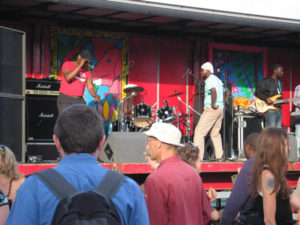 Olomide, Pepe Kalle, Tabu Ley and Madilu System are household names in many parts of Africa. The Congolese style of Music ranges from Ndombolo, Congolese rumba and soukous. Congolese Musicians stood out much earlier than their counterparts in other countries because they learnt the art of producing high quality records. They spent more time in the studio and produced songs with great meaning, depth and instrument separation. While in Congo, don’t forget to buy a few Vinyl records to take with you back home.
Olomide, Pepe Kalle, Tabu Ley and Madilu System are household names in many parts of Africa. The Congolese style of Music ranges from Ndombolo, Congolese rumba and soukous. Congolese Musicians stood out much earlier than their counterparts in other countries because they learnt the art of producing high quality records. They spent more time in the studio and produced songs with great meaning, depth and instrument separation. While in Congo, don’t forget to buy a few Vinyl records to take with you back home.
Congolese Food: Congolese food is heavily influenced by French and their Belgium colonizers. Mayonnaise is a favorite of the locals in the urban centers and can be mixed with peas, manioc, fish,  meat, salads and chili pepper. Other readily available foods include beef brochette, roast chicken and roast goat. Do not forget to taste capittaine or the locally bred chicken with peanut source – also known as poulet à la mwambe. There are countless high-end restaurants in Goma, Lubumbashi, Bukavu, Kisangani and Kinshasa offering both local food and international cuisines. A large expatriate community consisting of aid workers and UN employees in the cities means one can also find restaurants serving Indian, Lebanese, Chinese and other continental dishes.
meat, salads and chili pepper. Other readily available foods include beef brochette, roast chicken and roast goat. Do not forget to taste capittaine or the locally bred chicken with peanut source – also known as poulet à la mwambe. There are countless high-end restaurants in Goma, Lubumbashi, Bukavu, Kisangani and Kinshasa offering both local food and international cuisines. A large expatriate community consisting of aid workers and UN employees in the cities means one can also find restaurants serving Indian, Lebanese, Chinese and other continental dishes.
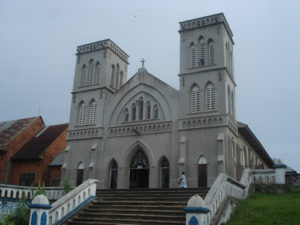 Kisangani: Formerly known as Stanleyville, Kisangani is the 3rd largest city in the Democratic Republic of Congo. It is surrounded by tropical forests on all sides by forest and rapidly growing as rural citizens migrate to the urban centers. There is a lot to do in Kisangani. Among the activities include visiting the Boyona waterfalls, shopping at the local markets, eating Congolese food from one of the many restaurants, marveling at the unique city architecture, visiting one of the museums, going to the zoo or botanical gardens. The University of Kisangani is a key attraction in the city as is the catholic cathedral in the central market.
Kisangani: Formerly known as Stanleyville, Kisangani is the 3rd largest city in the Democratic Republic of Congo. It is surrounded by tropical forests on all sides by forest and rapidly growing as rural citizens migrate to the urban centers. There is a lot to do in Kisangani. Among the activities include visiting the Boyona waterfalls, shopping at the local markets, eating Congolese food from one of the many restaurants, marveling at the unique city architecture, visiting one of the museums, going to the zoo or botanical gardens. The University of Kisangani is a key attraction in the city as is the catholic cathedral in the central market.
Lake Kivu: Lake Kivu is one of the largest lakes in Africa. It is shared by Rwanda and the Democratic Republic of Congo. Lake Kivu lies next to the great Virunga and Kahuzi-Biega National Park. Under the 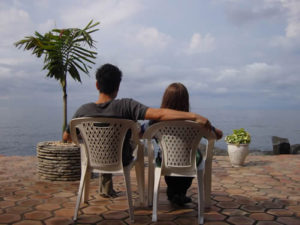 lake is a large reservoir of methane gas which scientists believe is a disaster waiting to happen if the right conditions present itself or if a volcanic eruption occurs among one of the Virunga volcanos. After a long safari in Congo or Rwanda, Lake Kivu is excellent for relaxation, swimming, island hopping, visiting local fishing communities, canoeing, kayaking, biking and other water spots. Fishing is also possible and the main catches are Nile Tilapia, Tanganyika sardines, Clarias, Haplochromis, Barbus and Limnothrissa miodon. There are no hippos, crocodiles or bilharzia to worry about while swimming in Lake Kivu.
lake is a large reservoir of methane gas which scientists believe is a disaster waiting to happen if the right conditions present itself or if a volcanic eruption occurs among one of the Virunga volcanos. After a long safari in Congo or Rwanda, Lake Kivu is excellent for relaxation, swimming, island hopping, visiting local fishing communities, canoeing, kayaking, biking and other water spots. Fishing is also possible and the main catches are Nile Tilapia, Tanganyika sardines, Clarias, Haplochromis, Barbus and Limnothrissa miodon. There are no hippos, crocodiles or bilharzia to worry about while swimming in Lake Kivu.
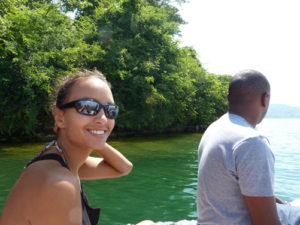 Idjwi Island: Also known as Ijwi, the island is found in Congo’s section of Lake Kivu. The Island covers an area of about 340 square kilometers and is considered the 2nd largest inland island in the continent of Africa. Idjwi Island is home to about 200,000 people. Most of them survive on subsistence farming and small scale fishing. Idjwi island became a kingdom in the 18th Century and had a connection to the ruling monarchy Rwanda at the time. Tourists who visit the Virunga and Kahuzi-Biega National Parks often visit the island for cultural tours, hiking and also to explore the beautiful lake Kivu. Boat rides to the island from Bukavu (near Kahuzi-Biega National Park) takes about 2 hours. Once there, the only means of transport is by bike, motorcycle or walking.
Idjwi Island: Also known as Ijwi, the island is found in Congo’s section of Lake Kivu. The Island covers an area of about 340 square kilometers and is considered the 2nd largest inland island in the continent of Africa. Idjwi Island is home to about 200,000 people. Most of them survive on subsistence farming and small scale fishing. Idjwi island became a kingdom in the 18th Century and had a connection to the ruling monarchy Rwanda at the time. Tourists who visit the Virunga and Kahuzi-Biega National Parks often visit the island for cultural tours, hiking and also to explore the beautiful lake Kivu. Boat rides to the island from Bukavu (near Kahuzi-Biega National Park) takes about 2 hours. Once there, the only means of transport is by bike, motorcycle or walking.
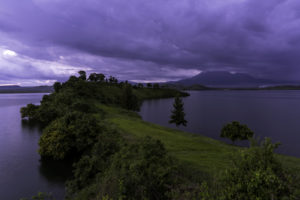 Virunga National Park: Virunga is the oldest national park in Africa and one of the many UNESCO World heritage sites in the Democratic Republic of Congo. The park was established in 1925 and is located in the eastern part of the country. Virunga was at first named Albert National Park and by then included the Volcanoes National Park in Rwanda and parts of Mgahinga Gorilla Park in Uganda. Virunga is the most visited national park in the Democratic Republic of Congo. What stands out about it apart from volcanoes and mountain gorillas is the remarkable biodiversity. Virunga is home to lions, leopards, chimpanzees, elephants, hippopotamus and rare creatures like the okapi. Gorilla trekking in Virunga National Park is the most popular activity followed closely by hiking Mount Nyiragongo.
Virunga National Park: Virunga is the oldest national park in Africa and one of the many UNESCO World heritage sites in the Democratic Republic of Congo. The park was established in 1925 and is located in the eastern part of the country. Virunga was at first named Albert National Park and by then included the Volcanoes National Park in Rwanda and parts of Mgahinga Gorilla Park in Uganda. Virunga is the most visited national park in the Democratic Republic of Congo. What stands out about it apart from volcanoes and mountain gorillas is the remarkable biodiversity. Virunga is home to lions, leopards, chimpanzees, elephants, hippopotamus and rare creatures like the okapi. Gorilla trekking in Virunga National Park is the most popular activity followed closely by hiking Mount Nyiragongo.
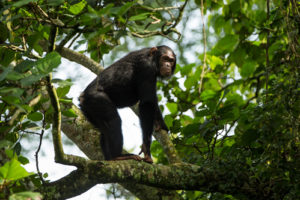 Chimpanzee Trekking in Virunga: Chimpanzee tracking is a lesser known activity which is open to visitors in Virunga. It is organized close to the park headquarters in Rumangabo. There is only one fully habituated group with about twelve individual chimps. Chimpanzee tracking starts at 6am and the probability of seeing them is high. Unlike gorillas, chimps love to spend time on tree tops. They don’t stay in one place for long and you might have to follow them for some time before taking good photos. Chimpanzee permits in Virunga cost $100 per person.
Chimpanzee Trekking in Virunga: Chimpanzee tracking is a lesser known activity which is open to visitors in Virunga. It is organized close to the park headquarters in Rumangabo. There is only one fully habituated group with about twelve individual chimps. Chimpanzee tracking starts at 6am and the probability of seeing them is high. Unlike gorillas, chimps love to spend time on tree tops. They don’t stay in one place for long and you might have to follow them for some time before taking good photos. Chimpanzee permits in Virunga cost $100 per person.
Mount Nyiragongo: The Nyiragongo Volcano is one of the key attractions in Virunga National Park and its plumes of smoke can be seen from as far as Rwanda during the night. Nyiragongo is an active 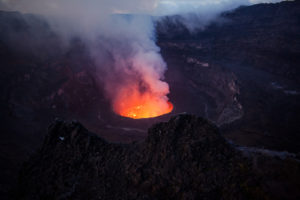 volcano with the largest lava lake on earth. Ever since 1984, the mountain has erupted 34 times with the last occurring in 2011. Every year thousands ignore the bad press and security reports from their embassies for a chance to call themselves as one of the few who have observed a lava lake up-close. When combined with gorilla trekking in Virunga and visiting the Serengeti/Masai Maraa, you would have done something that you can talk about with pride to your folks back home. Climbing Mount Nyiragongo takes two days and you will be left in awe at the sight of the lava lake. Nyiragongo hiking tickets cost $300 per person including a night spent on cabins while at the summit.
volcano with the largest lava lake on earth. Ever since 1984, the mountain has erupted 34 times with the last occurring in 2011. Every year thousands ignore the bad press and security reports from their embassies for a chance to call themselves as one of the few who have observed a lava lake up-close. When combined with gorilla trekking in Virunga and visiting the Serengeti/Masai Maraa, you would have done something that you can talk about with pride to your folks back home. Climbing Mount Nyiragongo takes two days and you will be left in awe at the sight of the lava lake. Nyiragongo hiking tickets cost $300 per person including a night spent on cabins while at the summit.
Gorilla Trekking in Virunga: Mountain gorillas are one of the most fascinating creatures on earth. Virunga National Park allows tourists to have close encounters with these majestic creatures at a 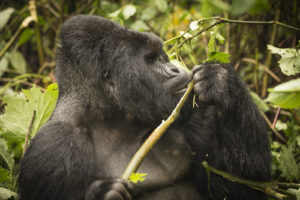 relatively cheap price. Permits cost $400 and there are 6 habituated gorilla groups in Virunga. Gorilla trekking in Virunga starts after the briefing at 7:30am. Only 8 trekkers may visit a gorilla group in a day. Tracking the gorillas takes you deep in the forest hence allowing you to see many of the park animals. It takes about 2 hours to find the primates but you are allowed only one hour with them. After observing the primates, you would need another 2 hours to get to the starting point of the trek.
relatively cheap price. Permits cost $400 and there are 6 habituated gorilla groups in Virunga. Gorilla trekking in Virunga starts after the briefing at 7:30am. Only 8 trekkers may visit a gorilla group in a day. Tracking the gorillas takes you deep in the forest hence allowing you to see many of the park animals. It takes about 2 hours to find the primates but you are allowed only one hour with them. After observing the primates, you would need another 2 hours to get to the starting point of the trek.
Senkwekwe Gorilla Orphanage: After visiting the gorillas in the wild, tourists who book with Mikeno lodge have an opportunity to visit the Senkwekwe Gorilla Orphanage. This is the only Mountain gorilla orphanage in the world and about 7 individuals call it home. The center also rehabilitates Eastern Lowland gorilla orphans for a while before relocating them to the Eastern Lowland 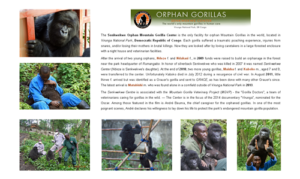 gorilla orphanage known as the Gorilla Rehabilitation and Conservation Education Center. The center was named after a giant silverback known as Senkwekwe. Senkwekwe was killed by poachers as he attempted to protect his family and recover an infant captured by animal traffickers.
gorilla orphanage known as the Gorilla Rehabilitation and Conservation Education Center. The center was named after a giant silverback known as Senkwekwe. Senkwekwe was killed by poachers as he attempted to protect his family and recover an infant captured by animal traffickers.
His death and the capture of other infant gorillas laid the foundation for the establishment of this center. The Center is set on a stretch of forest allowing the primates to experience the same conditions of their wild relatives. The Senkwekwe Gorilla Orphanage welcomes volunteers who are interested in learning more about mountain gorillas. If you are enthusiastic about gorilla conservation, you can sponsor one of the gorilla orphans or donate to the Sanctuary. Visiting the Center is free to tourists residing in the luxury Mikeno Lodge.
The Congo bloodhounds: In an effort to curb poaching in Virunga National Park, the management acquired bloodhounds. Bloodhounds are known for possessing a strong sense of smell and can trail humans who enter into the park illegally. The dogs are trained by Dr. Marlene Zahner and have been successfully in tracking mountain gorilla poachers as well as injured rangers. If you happen to be visiting 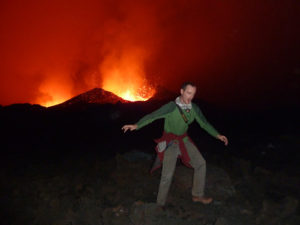 Virunga national park and have some spare time after a morning activity, spare time to meet the Congo bloodhounds. You will learn about their extensive training program and contribution to conservation.
Virunga national park and have some spare time after a morning activity, spare time to meet the Congo bloodhounds. You will learn about their extensive training program and contribution to conservation.
Mount Nyamuragira: Mount Nyamuragira is also an active volcano found within the Virunga National Park. Along with Nyiragongo, they are the most active volcanoes in the world. It also has a permanent lava lake on the summit. Although most tourists prefer hiking mount Nyiragongo, Nyamuragira is also fascinating and an amazing natural wonder. It is one mountain you must climb especially if you have already 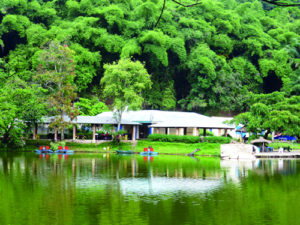 conquered Nyiragongo.
conquered Nyiragongo.
Lukaya River: This is one of the most prominent water bodies in the Democratic Republic of Congo. It gets its waters from the Crystal Mountains and then flows to the east through Bas-Congo before releasing its waters into the Ndjili River. Several important tourist attractions can be found along the river path including the Lola Ya Bonobo Sanctuary, waterfalls, beaches and even a lake formed by the river at a certain valley. The best way to experience this amazing water body is to take a train from Kinshasa to Matadi or vice versa. The rail line runs along the river valley for while in two sections.
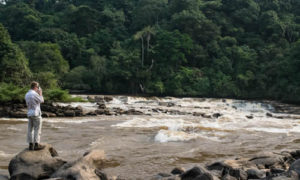 Zongo Falls: The Falls of Zongo offer tourists a chance to gaze at one of the great wonders of nature in Congo. Whereas the falls are beautiful on their own, the scenery around it is equally amazing and will leave you wondering at just how naturally beautiful the Democratic Republic of Congo is. Visit these waterfalls to escape the chaos and hustle in Kinshasa for a few days and take delight in exploring the falls or swimming below it. There are several accommodation facilities close to the falls including campsites or an area for setting up tent if you are a backpacker.
Zongo Falls: The Falls of Zongo offer tourists a chance to gaze at one of the great wonders of nature in Congo. Whereas the falls are beautiful on their own, the scenery around it is equally amazing and will leave you wondering at just how naturally beautiful the Democratic Republic of Congo is. Visit these waterfalls to escape the chaos and hustle in Kinshasa for a few days and take delight in exploring the falls or swimming below it. There are several accommodation facilities close to the falls including campsites or an area for setting up tent if you are a backpacker.
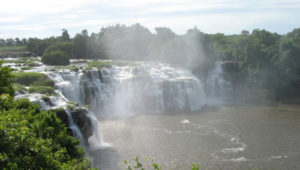 Boyoma falls: Formerly known as the Stanley falls, the Boyoma falls are a collection of 7 rapids – each measuring about 4.5 meters high along the Lualaba River. The Wagenya tribe live in areas around the falls and use ancient fishing methods (including baskets) which have been passed on from generation to generation. If you happen to travel between Ubundu and Kisangani, you will be left in awe at the sheer beauty of these falls. After visiting the falls, you can also visit the Wagenya tribe to learn more about their way of life and unique fishing methods. These methods are
Boyoma falls: Formerly known as the Stanley falls, the Boyoma falls are a collection of 7 rapids – each measuring about 4.5 meters high along the Lualaba River. The Wagenya tribe live in areas around the falls and use ancient fishing methods (including baskets) which have been passed on from generation to generation. If you happen to travel between Ubundu and Kisangani, you will be left in awe at the sheer beauty of these falls. After visiting the falls, you can also visit the Wagenya tribe to learn more about their way of life and unique fishing methods. These methods are 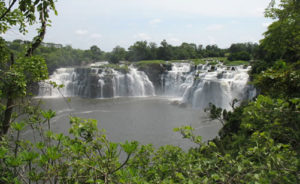 tailored to work effectively in the fast flowing rapids and rocks.
tailored to work effectively in the fast flowing rapids and rocks.
Livingstone waterfalls: The Livingstone waterfalls are a collection of large rapids found in the Congo river. The falls begin from Malebo pool all the way to Bas-Congo (Matadi). They are one of the top attractions in the Democratic Republic of Congo and worth visiting if you happen to be planning a safari in the country. The waterfalls are named after the famous British explorer known as David Livingstone.
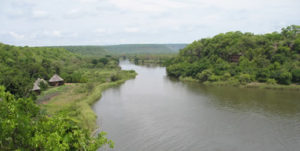 Valle de la Lufira: Valle de la Lufira is a UNESCO Biosphere Reserve found in Lubumbashi. It is a collection of the best of the country’s flora and fauna. Both local and international tourists go to the reserve for nature walks, relaxation, picnics, bird watching and other activities. If you happen to be visiting Lubumbashi but don’t have the time to visit the nearby national parks, this is the place to go to. You will be left in awe by the beautiful scenery, trees, plants, butterflies, moths, birds and primates.
Valle de la Lufira: Valle de la Lufira is a UNESCO Biosphere Reserve found in Lubumbashi. It is a collection of the best of the country’s flora and fauna. Both local and international tourists go to the reserve for nature walks, relaxation, picnics, bird watching and other activities. If you happen to be visiting Lubumbashi but don’t have the time to visit the nearby national parks, this is the place to go to. You will be left in awe by the beautiful scenery, trees, plants, butterflies, moths, birds and primates.
Maiko National Park: Maiko National Park covers an area of about 10,885 square kilometers. Most of it is forest and an important global carbon sink. Like most of the National parks in the country, it is located in a very remote area. In fact, it is Congo’s most inaccessible game park. The park consists of 3 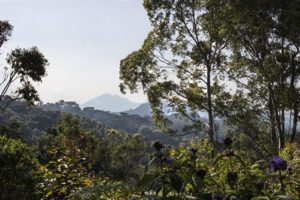 sectors – Maniema, Province Orientale and North Kivu. Maiko National Park is one of the last strongholds of the Grauer’s gorilla – also known as the Eastern lowland gorillas. These are the largest subspecies of gorillas. Other animals endemic to the Congo but found in Maiko include the Congo Peafowl and Okapi. Maiko National Park is an important conservation site for aquatic genet, chimpanzees and African forest elephants. Visitors should also look forward to spotting leopards and the elusive bongo.
sectors – Maniema, Province Orientale and North Kivu. Maiko National Park is one of the last strongholds of the Grauer’s gorilla – also known as the Eastern lowland gorillas. These are the largest subspecies of gorillas. Other animals endemic to the Congo but found in Maiko include the Congo Peafowl and Okapi. Maiko National Park is an important conservation site for aquatic genet, chimpanzees and African forest elephants. Visitors should also look forward to spotting leopards and the elusive bongo.
Cave Exploration: If you love cave exploration, you will not be disappointed while visiting the Democratic Republic of Congo. The Dimba Cave contains evidence of human activity and artifacts dating back to the stone age period. The Matupi cave in Ituri rain-forest also provides evidence of human settlements that occurred about 40,000 years ago. Hunting tools like arrows and saws have been found by archeologists within these caves. Other caves worth exploring include the Thysville caves where blind fish has been found (Endemic to the caves), the Kakanda malachite caves in Katanga and the cave systems found within Kahuzi-Biega National Park.
Kahuzi-Biega National Park: This national park is found in found in the Eastern part of the Democratic Republic of Congo – near the border with Rwanda and close to Lake Kivu. Kahuzi-Biega National Park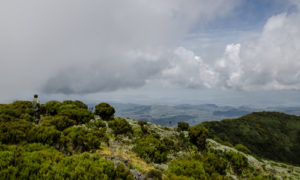 National Park is another of the many UNESCO World heritage sites in Congo. The gets its name from two extinct volcanoes known as Kahuzi and Biega. These two volcanos paint the landscape and are joined together by a small stretch of forest. Kahuzi-Biega National Park offers travelers that complete wilderness charm and feeling that only the Congo can provide these days. The park is an excellent travel destination for travelers who desire to do something different or discover Africa’s last remaining true wildernesses.
National Park is another of the many UNESCO World heritage sites in Congo. The gets its name from two extinct volcanoes known as Kahuzi and Biega. These two volcanos paint the landscape and are joined together by a small stretch of forest. Kahuzi-Biega National Park offers travelers that complete wilderness charm and feeling that only the Congo can provide these days. The park is an excellent travel destination for travelers who desire to do something different or discover Africa’s last remaining true wildernesses.
Other than pristine wilderness, Kahuzi-Biega National Park is one of the last strongholds for the largest gorilla species on earth – the Grauer’s gorilla. About 400 individuals are found in the park with others 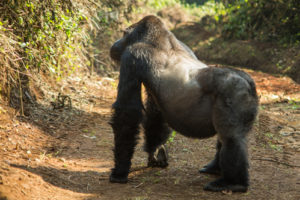 found in Maiko National Park and some other reserves in the neighboring areas. In total, about 5,000 Eastern lowland gorillas remain on earth and they are all found in the Democratic Republic of Congo. Interestingly, despite not having the largest population of the primates, Kahuzi Biega is the best place to see the Eastern Lowland gorilla. Eastern lowland gorilla trekking is the most popular activity but tourists can also register for chimpanzee tracking, visiting the chimpanzee sanctuary in Lwiro, birding, mountain hiking and nature walks to discover amazing waterfalls. Eastern Lowland gorilla permits cost $400 per person.
found in Maiko National Park and some other reserves in the neighboring areas. In total, about 5,000 Eastern lowland gorillas remain on earth and they are all found in the Democratic Republic of Congo. Interestingly, despite not having the largest population of the primates, Kahuzi Biega is the best place to see the Eastern Lowland gorilla. Eastern lowland gorilla trekking is the most popular activity but tourists can also register for chimpanzee tracking, visiting the chimpanzee sanctuary in Lwiro, birding, mountain hiking and nature walks to discover amazing waterfalls. Eastern Lowland gorilla permits cost $400 per person.
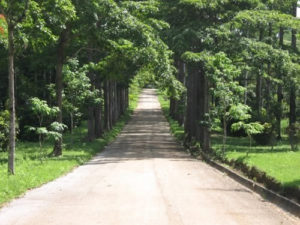 Jardin Botanique de Kisantu: These botanical gardens are located in Kinshasa, close to Mbuela Lodge. An entrance fee is charged before accessing the facility. A resident Guide will take you around the gardens including visiting a small museum and gift shop within the facility. Tree/flower seedlings can be bought from a nursery bed within the site for about $2. After your tour of the facility, you can have lunch at the restaurant. Visiting the botanical gardens takes about 2 hours and is excellent for families and couples who need a quiet place for relaxation.
Jardin Botanique de Kisantu: These botanical gardens are located in Kinshasa, close to Mbuela Lodge. An entrance fee is charged before accessing the facility. A resident Guide will take you around the gardens including visiting a small museum and gift shop within the facility. Tree/flower seedlings can be bought from a nursery bed within the site for about $2. After your tour of the facility, you can have lunch at the restaurant. Visiting the botanical gardens takes about 2 hours and is excellent for families and couples who need a quiet place for relaxation.
Salonga National Park: Salonga National park is located within the Congo river basin and covers an area of about 36,00 square kilometers. It is a UNESCO World Heritage site because of the dense forests and remarkable creatures that call it home. The tropical rain-forest which makes up much of the national 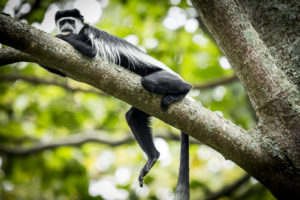 park is so dense that new species are still being discovered. The park was declared a World Heritage site in danger since 1999 because of continuous civil wars in the eastern Congo. These civil wars have allowed poaching for bush meat to thrive. Regardless of the civil wars and poaching, Salonga remains a major tourist attraction for the future because of its extensive forests and remarkable biodiversity. Among the wildlife found in the park include the rare Congo peafowl, forest elephants, bonobos, salonga monkeys, Tshuapa red Colobus monkeys, okapi and the African slender-snouted crocodile. The road networks within and outside the park is poorly developed. Because of that, the only way to access the park is via the river.
park is so dense that new species are still being discovered. The park was declared a World Heritage site in danger since 1999 because of continuous civil wars in the eastern Congo. These civil wars have allowed poaching for bush meat to thrive. Regardless of the civil wars and poaching, Salonga remains a major tourist attraction for the future because of its extensive forests and remarkable biodiversity. Among the wildlife found in the park include the rare Congo peafowl, forest elephants, bonobos, salonga monkeys, Tshuapa red Colobus monkeys, okapi and the African slender-snouted crocodile. The road networks within and outside the park is poorly developed. Because of that, the only way to access the park is via the river.
Okapi Wildlife Reserve: The Okapi Wildlife Reserve is one of the many beautiful attractions and UNESCO World Heritage sites in Congo which have been hidden way from much of the world. The 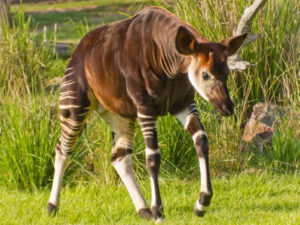 reserve covers about 14,000 square kilometers and one fifth of it consists of dense forest. Okapi Wildlife Reserve rewards those who are fortunate enough to visit with amazing scenery, a chance to observe the elusive okapi, other wildlife species, waterfalls and a cultural encounter that is second to none in Africa. To find the elusive okapi, one needs at least 3 days in the Ituri forest. The search is interesting because it is led by Mbuti pygmies. They are the ones who know the secrets of the forest and can locate the okapi using instinct or small leads. While tracking the okapi, the pygmies will introduce you to their lifestyle of hunting and gathering in the forest.
reserve covers about 14,000 square kilometers and one fifth of it consists of dense forest. Okapi Wildlife Reserve rewards those who are fortunate enough to visit with amazing scenery, a chance to observe the elusive okapi, other wildlife species, waterfalls and a cultural encounter that is second to none in Africa. To find the elusive okapi, one needs at least 3 days in the Ituri forest. The search is interesting because it is led by Mbuti pygmies. They are the ones who know the secrets of the forest and can locate the okapi using instinct or small leads. While tracking the okapi, the pygmies will introduce you to their lifestyle of hunting and gathering in the forest.
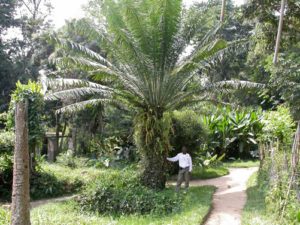 Symphonies Naturelles: Found outside the capital Kinshasa, the Symphonies Naturelles is an excellent place to spend the afternoon with family, friends or a partner. The 495 hectares of forest is home to birds, primates, butterflies, moths and plant species that are endemic to the Congo. The main activities are birdwatching, sport fishing, nature walks, primates viewing and picnics. There is a good restaurant at the site which serves international cuisines and drinks.
Symphonies Naturelles: Found outside the capital Kinshasa, the Symphonies Naturelles is an excellent place to spend the afternoon with family, friends or a partner. The 495 hectares of forest is home to birds, primates, butterflies, moths and plant species that are endemic to the Congo. The main activities are birdwatching, sport fishing, nature walks, primates viewing and picnics. There is a good restaurant at the site which serves international cuisines and drinks.
Lomako-Yokokala Faunal Reserve: This reserve is located along the Congo river and a remote part of the country known as Mandaka. Visiting this remote reserve provides the best opportunity to observe wild pygmy chimpanzees (bonobos). Apart from spotting bonobos, the reserve is a birders paradise. A more comprehensive tour could take you along the river to visit remote villages and observe the indigenous people of the area going about with their lives. Visiting the Lomako-Yokokala Faunal Reserve is recommended for those who love adventure and wish to discover the natural beauty of the country 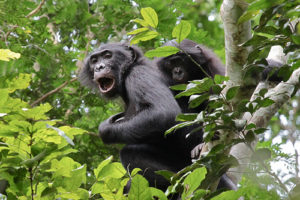 even if it involves enduring long journeys to the unknown. In fact, to get to the reserve, you will need to get a domestic flight from Kinshasa to Mbandaka and then endure a 3-day trip by canoe along the Congo river. Once you reach the closest village to the park, you will have to endure 5 hours of working to get to the park offices where activities begin.
even if it involves enduring long journeys to the unknown. In fact, to get to the reserve, you will need to get a domestic flight from Kinshasa to Mbandaka and then endure a 3-day trip by canoe along the Congo river. Once you reach the closest village to the park, you will have to endure 5 hours of working to get to the park offices where activities begin.
While visiting Lomako-Yokokala Faunal Reserve, you have to forget about all the usual comforts of life. By that we mean learning to use pit latrines and buckets for bathing. There is no electricity, no phone systems or internet in Lomako-Yokokala Faunal Reserve. You can charge your gadgets using solar power but this is not always reliable especially during the rainy season. Tracking the bonobos starts at around 3 or 4am. The Rangers ensure that they know their last nesting site so that they can start the search from there.
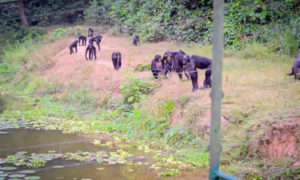 Lola Ya Bonobo: Lola Ya Bonobo begun as AAC sanctuary Bonobo Sanctuary. At that time, it was located in the middle of Kinshasa. It later changed name to Lola Ya Bonobo and was shifted to its current location in Kimwenza – just outside Kinshasa. Visiting Lola Ya Bonobo is an excellent option for tourists who would love to see primates but cannot visit the Lomako-Yokokala Faunal Reserve or others. It is one of the most visited places in Kinshasa and sits on a 30-hectare forest. Lola Ya Bonobo is the only orphanage for pygmy chimpanzees in the world.
Lola Ya Bonobo: Lola Ya Bonobo begun as AAC sanctuary Bonobo Sanctuary. At that time, it was located in the middle of Kinshasa. It later changed name to Lola Ya Bonobo and was shifted to its current location in Kimwenza – just outside Kinshasa. Visiting Lola Ya Bonobo is an excellent option for tourists who would love to see primates but cannot visit the Lomako-Yokokala Faunal Reserve or others. It is one of the most visited places in Kinshasa and sits on a 30-hectare forest. Lola Ya Bonobo is the only orphanage for pygmy chimpanzees in the world.
Bonobos like many of Congo’s wild animals are targeted by not only pet traders but also those who only want bush meat. When an adult bonobo is killed for meat or captured by pet traders, their young are left orphaned. If the infant was not weaned at the time the mother was taken away, it’s chances of survival 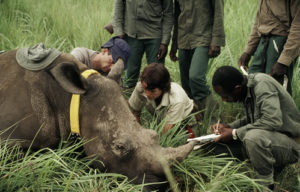 are minimal. The sanctuary helps rescue these orphaned bonobos. Those that are wounded or traumatized undergo rehabilitation before joining those already at the center. About 60 bonobos can be seen at the sanctuary. They live in similar conditions to their relatives in the wild and can forage on wild fruits or learn how to deal with any dangers lurking in the forest. In case you wish to volunteer at the Centre or contribute to the conservation of bonobos, you might want to visit their website here.
are minimal. The sanctuary helps rescue these orphaned bonobos. Those that are wounded or traumatized undergo rehabilitation before joining those already at the center. About 60 bonobos can be seen at the sanctuary. They live in similar conditions to their relatives in the wild and can forage on wild fruits or learn how to deal with any dangers lurking in the forest. In case you wish to volunteer at the Centre or contribute to the conservation of bonobos, you might want to visit their website here.
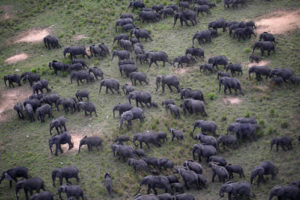 Garamba National Park: Garamba is a UNESCO World Heritage site for its collection of plant and animal life. The park was established in 1938, making it one of the oldest national parks in Africa. The park consists of endless savannah grasslands and woodlands which continue all the way to South Sudan and the Central African Republic. Garamba once home to over 20,000 African elephants but now only about 1,500 remain. Extensive poaching may soon wipe out the last known population of White Rhinos if conservationists lower their guard. Garamba is arguably the best par for standard game drives in the Democratic Republic of Congo. Visitors can view all the big 5, giraffes, hippos, antelopes and birds.
Garamba National Park: Garamba is a UNESCO World Heritage site for its collection of plant and animal life. The park was established in 1938, making it one of the oldest national parks in Africa. The park consists of endless savannah grasslands and woodlands which continue all the way to South Sudan and the Central African Republic. Garamba once home to over 20,000 African elephants but now only about 1,500 remain. Extensive poaching may soon wipe out the last known population of White Rhinos if conservationists lower their guard. Garamba is arguably the best par for standard game drives in the Democratic Republic of Congo. Visitors can view all the big 5, giraffes, hippos, antelopes and birds.
For more information visit
All Categories
Recent Posts
Birding Sports in Uganda.
Kidepo Valley National Park
Chimpanzee Habituation in Uganda
Tags
Quick booking process
+256 393254072
